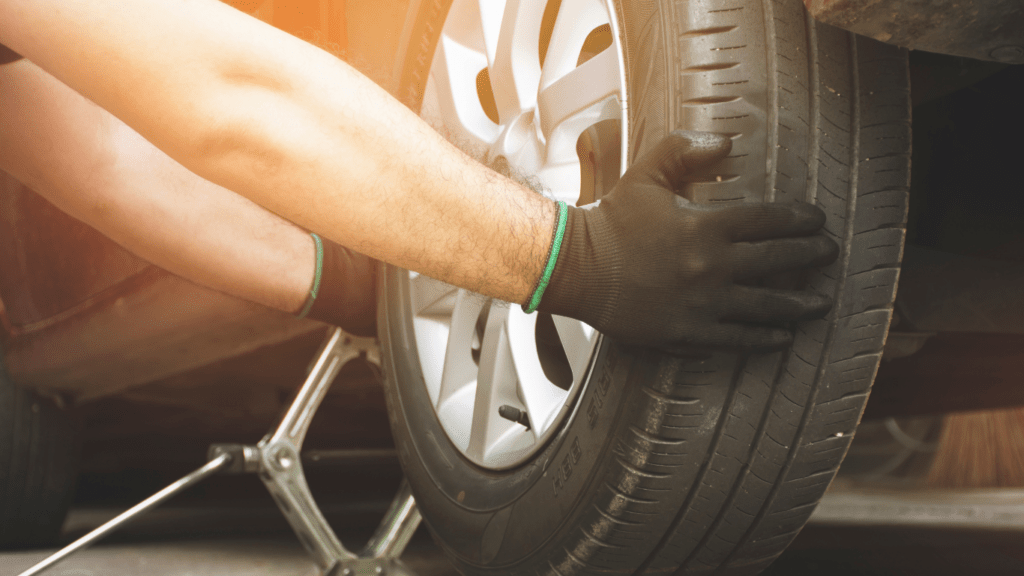Understanding the Basics of Tire Maintenance
Regular tire maintenance is crucial for vehicle safety and performance. Proper care can prevent many common tire problems and ensure a smoother ride.
What is Tire Rotation?
Tire rotation involves moving tires to different positions on a vehicle. Typically, mechanics move the front tires to the back and the rear tires to the front. The rotation pattern may vary depending on the vehicle type and tire manufacturer recommendations.
Consistent tire rotation promotes even tire wear, extending the life of the tires. For instance, in front-wheel-drive vehicles, the front tires wear faster due to the added stress from steering and braking.
Why Regular Tire Services Are Essential
Regular tire services include inspections, alignments, and balancing. Tire inspections help identify issues like punctures or improper inflation. Mechanics check tire pressure as incorrect tire pressure can impact fuel efficiency and tire longevity.
Alignments ensure the wheels are positioned correctly, preventing uneven wear. Balancing distributes tire weight evenly around the axle, reducing vibrations and improving ride quality.
Ignoring these services increases the risk of tire failure, leading to unsafe driving conditions and higher costs in the long run.
The Benefits of Regular Tire Services and Rotations
Regular tire services and rotations offer significant advantages that enhance both tire longevity and driving safety.
Extended Tire Life
Extending tire life through regular services saves money and maintains optimal vehicle performance. Tire rotation, typically done every 5,000 to 7,500 miles, ensures even tire wear by changing tire positions.
Even wear prevents premature tire replacements. Routine inspections identify issues such as tread wear and damage, which can be addressed before they worsen. Proper alignment and balancing also prevent uneven wear, enhancing tire longevity.
Improved Vehicle Safety
Improving vehicle safety with regular tire services mitigates risks associated with worn or misaligned tires. Evenly worn tires maintain consistent traction, reducing skidding and improving braking distances.
Regular inspections spot potential hazards like cuts, punctures, or bulges that could lead to blowouts. Correct alignments ensure stable vehicle handling and prevent drifting, enhancing control.
Balancing adjusts tire weight distribution, minimizing vibrations and promoting a smoother, safer ride.
Regular tire services, including rotations, alignments, and inspections, play a crucial role in extending tire life and ensuring vehicle safety.
How Often Should You Rotate Your Tires?

Regular tire rotations ensure even tire wear, promoting safety and extending tire life. The general recommendation is every 5,000 to 7,500 miles.
Industry Standards for Tire Rotation
Many vehicle manufacturers suggest tire rotations at specific intervals. The typical range is between 5,000 and 7,500 miles. Check your owner’s manual for precise guidelines.
Industry experts, including the National Highway Traffic Safety Administration, endorse these intervals to maintain optimal tire health.
- Passenger Cars: 5,000 to 7,500 miles
- Light Trucks / SUVs: 5,000 to 7,500 miles
- High-Performance Vehicles: 3,000 to 5,000 miles
Signs That Your Tires Need Service
Consistent tire inspections reveal when rotations or services are due. Look for the following indicators.
- Uneven Wear: Tread on one side depletes faster, signaling alignment issues.
- Vibrations: Steering wheel shakes, indicating imbalanced tires.
- Low Tread Depth: Use a tread depth gauge; less than 2/32 inch mandates immediate attention.
- Poor Handling: Reduced stability or difficulty in maneuvering suggests tire problems.
Regular observations help spot these signs, ensuring timely interventions for safer driving conditions. Regular maintenance preserves tire life, ensuring a smoother ride.
Choosing the Right Service Provider
Selecting the right service provider for tire maintenance is critical for ensuring vehicle safety and performance. Reliable providers offer quality services and use proper techniques to enhance your driving experience.
What to Look for in a Tire Service Provider
When choosing a tire service provider, consider:
- Certifications: Verify if the technicians have ASE (Automotive Service Excellence) or TIA (Tire Industry Association) certifications.
- Reputation: Look for positive reviews and ratings from previous customers on platforms like Google and Yelp.
- Tools and Equipment: Ensure the provider uses modern tools and equipment for accurate tire services.
- Service Range: Check if the provider offers comprehensive services, including rotations, alignments, inspections, and balancing.
- Warranty: Confirm if they offer warranties on their services and products, indicating confidence in their work.
DIY vs Professional Tire Services
DIY tire services can be tempting due to cost savings. While simple tasks like checking tire pressure are manageable, others, like rotations and balancing, require specialized tools and expertise:
- Accuracy: Professionals ensure precise tire balancing and alignment, which might be challenging to achieve at home.
- Safety: They conduct thorough inspections, identify hidden issues, and use proper techniques to ensure your vehicle’s stability.
- Convenience: Hiring a professional saves time and effort, allowing you to focus on driving instead of maintenance.
Choosing the right service provider and opting for professional services ensures your vehicle and tires remain in optimal condition.

